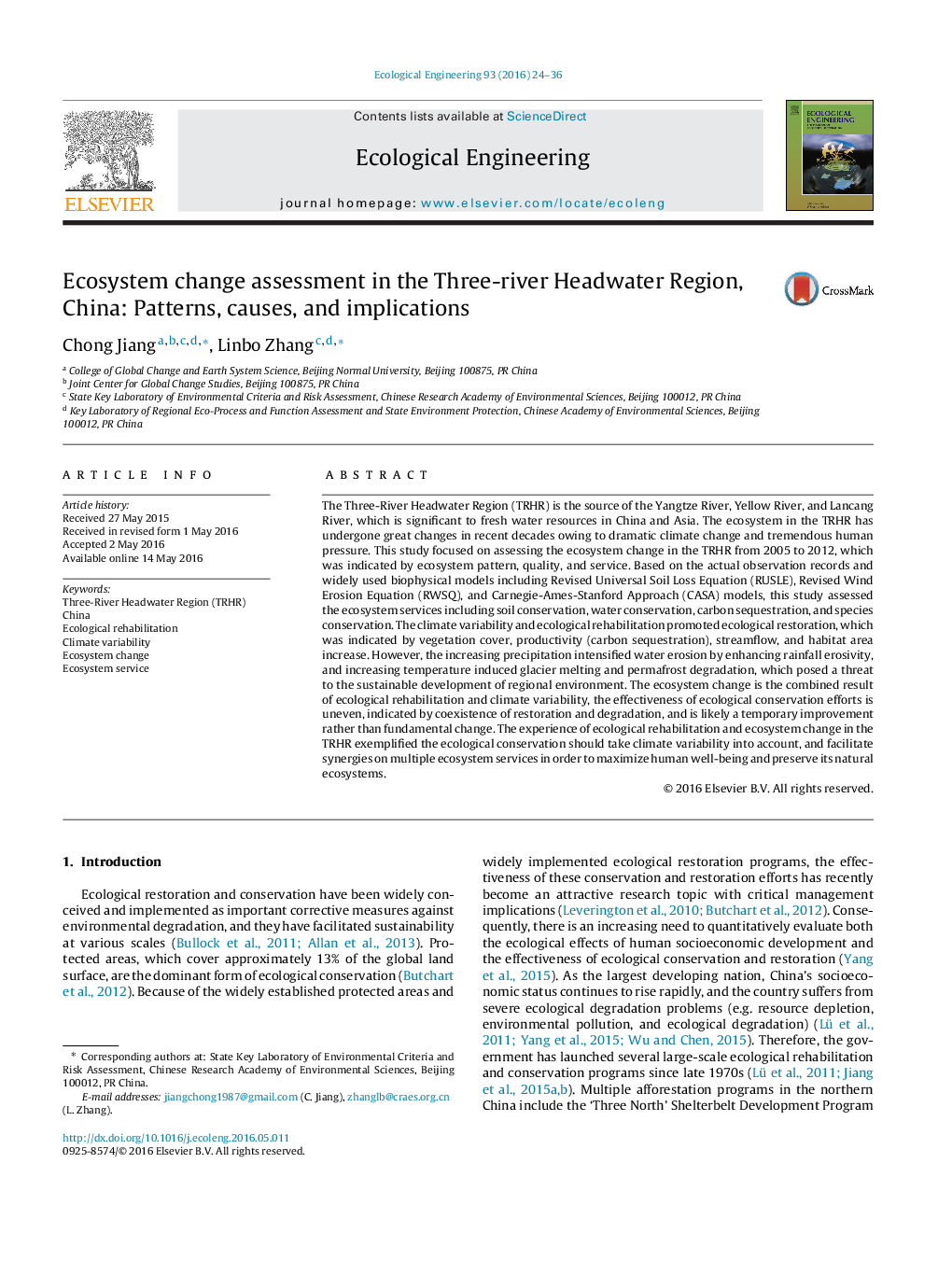| کد مقاله | کد نشریه | سال انتشار | مقاله انگلیسی | نسخه تمام متن |
|---|---|---|---|---|
| 4388709 | 1618006 | 2016 | 13 صفحه PDF | دانلود رایگان |
• We investigated the pattern, quality, and service of ecosystem from 2005 to 2012.
• Wetlands expansion and desert shrinkage were observed, but the overall pattern was stable.
• The soil erosion amount increased slightly from 2005 to 2012 driven by precipitation increase.
• Ecological restoration and degradation coexisted owing to complex driving forces.
• The effectiveness of ecological restoration programs is heterogeneous in their performance.
The Three-River Headwater Region (TRHR) is the source of the Yangtze River, Yellow River, and Lancang River, which is significant to fresh water resources in China and Asia. The ecosystem in the TRHR has undergone great changes in recent decades owing to dramatic climate change and tremendous human pressure. This study focused on assessing the ecosystem change in the TRHR from 2005 to 2012, which was indicated by ecosystem pattern, quality, and service. Based on the actual observation records and widely used biophysical models including Revised Universal Soil Loss Equation (RUSLE), Revised Wind Erosion Equation (RWSQ), and Carnegie-Ames-Stanford Approach (CASA) models, this study assessed the ecosystem services including soil conservation, water conservation, carbon sequestration, and species conservation. The climate variability and ecological rehabilitation promoted ecological restoration, which was indicated by vegetation cover, productivity (carbon sequestration), streamflow, and habitat area increase. However, the increasing precipitation intensified water erosion by enhancing rainfall erosivity, and increasing temperature induced glacier melting and permafrost degradation, which posed a threat to the sustainable development of regional environment. The ecosystem change is the combined result of ecological rehabilitation and climate variability, the effectiveness of ecological conservation efforts is uneven, indicated by coexistence of restoration and degradation, and is likely a temporary improvement rather than fundamental change. The experience of ecological rehabilitation and ecosystem change in the TRHR exemplified the ecological conservation should take climate variability into account, and facilitate synergies on multiple ecosystem services in order to maximize human well-being and preserve its natural ecosystems.
Journal: Ecological Engineering - Volume 93, August 2016, Pages 24–36
